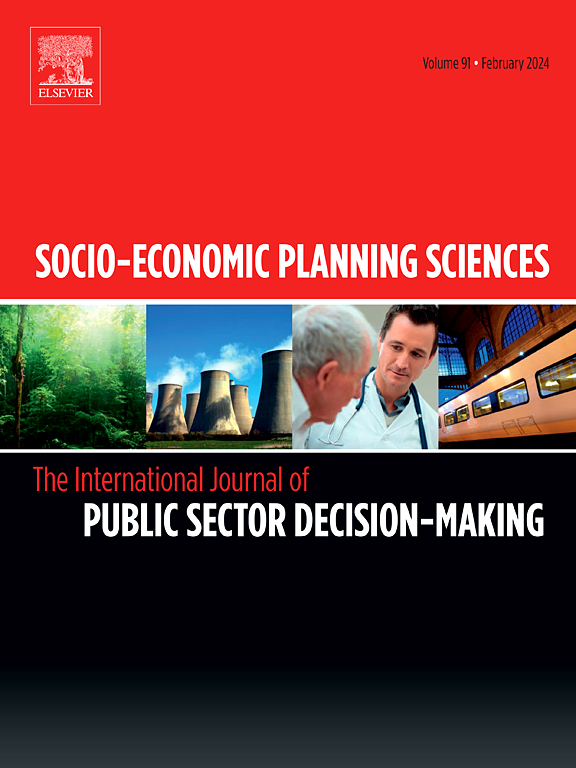涓滴或虹吸:循环经济视角下数字经济对绿色创新的溢出效应
IF 5.4
2区 经济学
Q1 ECONOMICS
引用次数: 0
摘要
除了数字化和可持续发展推动的变革外,数字经济还开辟了新的道路,为绿色创新的发展注入了新的活力。绿色创新作为循环经济体系的关键驱动力,能够有效促进经济的可持续发展和高质量增长。本文采用2011-2021年长江经济带108个地级及以上城市的面板数据集,通过实证观察,运用空间德宾模型探讨了数字经济对绿色创新的溢出效应及其传导机制。研究结果表明,长江经济带数字经济和绿色创新的分布不均衡,下游地区比中上游地区表现出更显著的水平。虽然数字经济促进了当地城市的绿色创新,但它也对邻近城市产生了涓滴效应,通过各种测试,这种效应仍然强劲。数字经济对绿色创新的溢出效应在下游地区较为明显,这些地区是人力资本和绿色创新高度集中的城市。机制检验表明,数字经济通过促进研发人员流动、研发资金流动和产业结构升级,提升了地方绿色创新水平。在邻近地区的正向传播效应主要是由研发人员的流动驱动的。本研究为指导绿色转型、促进区域协调发展提供了有价值的实证见解。本文章由计算机程序翻译,如有差异,请以英文原文为准。
Trickle-down or siphon: The spillover effects of the digital economy on green innovation from the perspective of the circular economy
In addition to the transformations driven by digitalization and sustainability, the digital economy has opened new paths and revitalized the advancement of green innovation. As a key driving force of the circular economy system, green innovation can effectively promote sustainable development and high-quality economic growth. This study employs a panel dataset encompassing 108 cities at and above the prefectural-level within the Yangtze River Economic Belt from 2011–2021 to investigate the spillover impacts and transmission mechanisms of the digital economy on green innovation through the Spatial Durbin Model through empirical observations. The findings reveal an uneven distribution of the digital economy and green innovation within the Yangtze River Economic Belt, with the downstream area exhibiting more significant levels than the middle and upper sections. While the digital economy enhances green innovation in local cities, it also has a trickle-down effect on neighboring cities, which remains robust through various tests. The spillover effects of the digital economy on green innovation are pronounced in downstream regions, which are cities with high concentrations of human capital and green innovation. Mechanistic testing shows that the digital economy advances local green innovation levels by facilitating the flow of R&D staff, R&D capital, and industrial structure upgrading. The positive transmission effect in neighboring areas is driven primarily by the movement of R&D staff. This study offers valuable empirical insights for guiding green transformation efforts and promoting coordinated regional development.
求助全文
通过发布文献求助,成功后即可免费获取论文全文。
去求助
来源期刊

Socio-economic Planning Sciences
OPERATIONS RESEARCH & MANAGEMENT SCIENCE-
CiteScore
9.40
自引率
13.10%
发文量
294
审稿时长
58 days
期刊介绍:
Studies directed toward the more effective utilization of existing resources, e.g. mathematical programming models of health care delivery systems with relevance to more effective program design; systems analysis of fire outbreaks and its relevance to the location of fire stations; statistical analysis of the efficiency of a developing country economy or industry.
Studies relating to the interaction of various segments of society and technology, e.g. the effects of government health policies on the utilization and design of hospital facilities; the relationship between housing density and the demands on public transportation or other service facilities: patterns and implications of urban development and air or water pollution.
Studies devoted to the anticipations of and response to future needs for social, health and other human services, e.g. the relationship between industrial growth and the development of educational resources in affected areas; investigation of future demands for material and child health resources in a developing country; design of effective recycling in an urban setting.
 求助内容:
求助内容: 应助结果提醒方式:
应助结果提醒方式:


